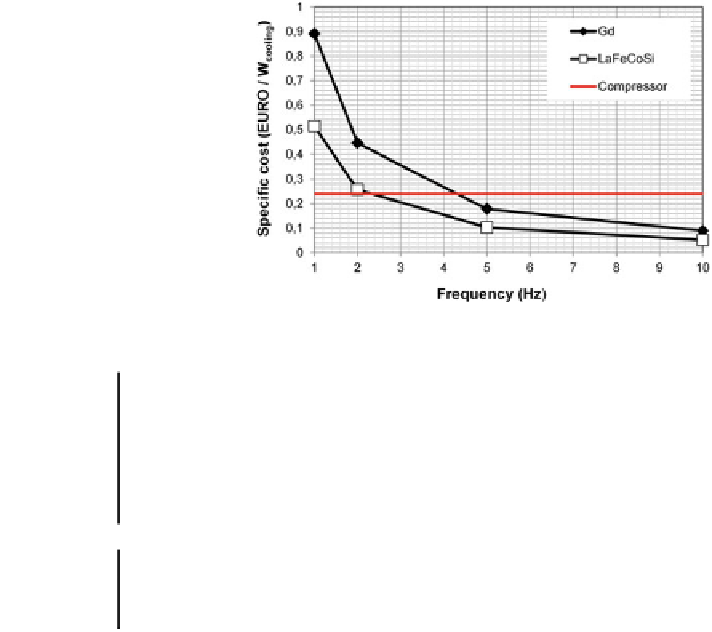Environmental Engineering Reference
In-Depth Information
Fig. 9.3 Comparison of the
speci
c costs for a 50-W
c
compressor and the equivalent
ideal magnetic refrigerator
Table 9.4 The mass-production cost estimation of the magnet assembly in Fig.
9.3
Material
Eurokg
−
1
Mass
(kg)
COST
(Euro)
Manufacturing cost of
assembly
Total cost
(Euro)
NdFeB
40
6
240
+25 %
300
Soft iron
5
22.2
111
+25 %
139
AMR
LaFeCoSi
60
0.60
36
/
36
475
NdFeB
40
6
240
+25 %
300
Soft iron
5
22.2
111
+25 %
139
AMR Gd
150
0.66
99
/
99
538
comparison with the whole magnetocaloric device, a frequency of operation of
above 3 Hz will actually be required. At this frequency, the magnetic refrigerator
will have to operate with an ef
ciency at least as high as a compressor refrigerator,
as well as with an equivalent temperature span between the heat source and heat
sink (i.e. 40 K or more). Note again that the 40 K temperature span with the
predicted same or higher ef
ciency of the magnetic refrigerator represents an ideal
case. This also holds true for the frequency of operation. For such an ideal case the
AMR should actually consist of a layered magnetocaloric material and produced as
a structure with very tiny plates (a honeycomb or similar ordered structure) with
thickness of, e.g. 30
100
ʼ
, porosity of about 30
45 %, and with a similar thickness
-
-
of equally sized
fl
uid voids. For frequencies above 5 Hz, using water as the heat
transfer
uid in such an AMR will also not be a good option.
Note also that any complication related to the magnet structure will increase the
costs. In Fig.
9.2
, the magnet assembly applies simple rectangular prisms of per-
manent magnets. If we wish to make such magnets more complex, the
fl
rst question
is of course why is this required? For instance, we have already shown in the
eld is perhaps















Search WWH ::

Custom Search